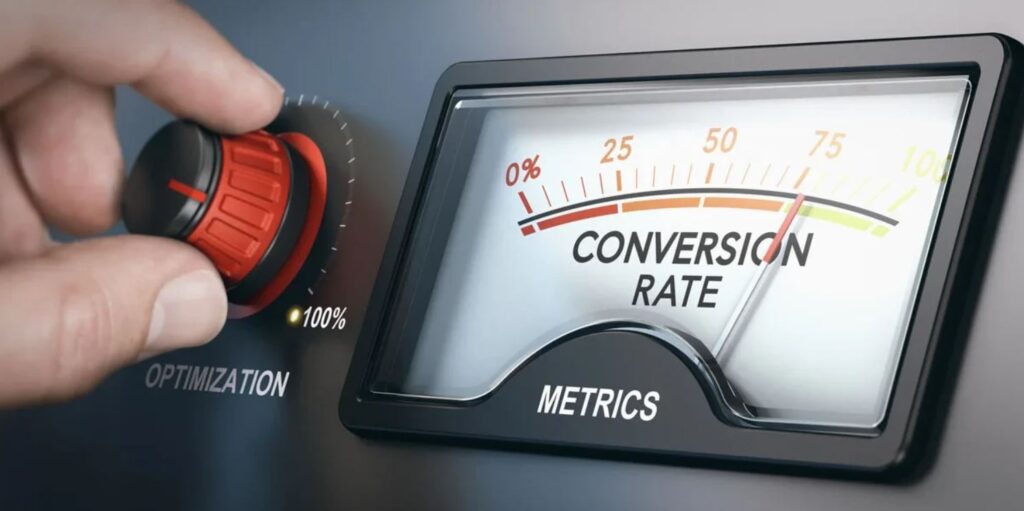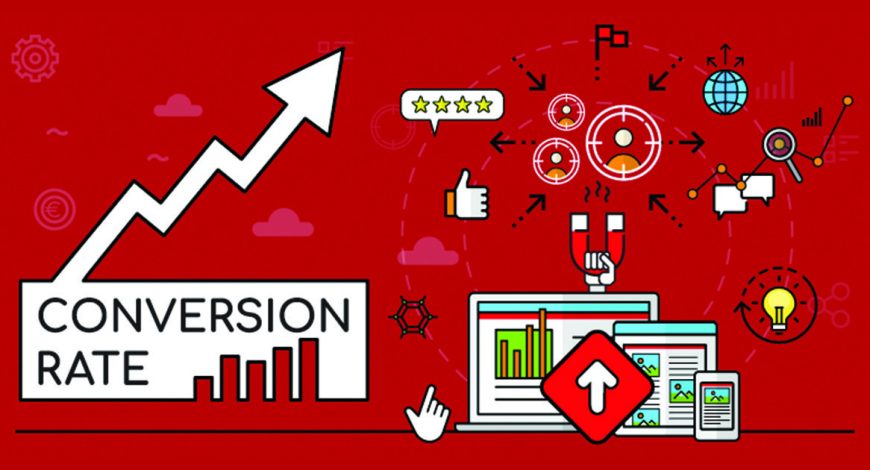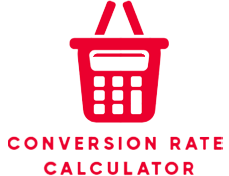In the digital world, traffic alone doesn’t pay the bills — conversions do.
Thousands of visitors might scroll through your site daily, but unless they’re taking action — making a purchase, filling out a form, or signing up for your service — your website isn’t truly working for you.
That’s why understanding how to calculate website conversion rate is essential to growth.
In this in-depth guide from Sales Conversion Rate Calculator, we’ll break down everything you need to know:
- What is a website conversion rate
- How to calculate it
- Real examples across industries
- Average benchmarks
- Tools and tips to improve your site conversion rate
- And answers to all your burning questions
Whether you’re an eCommerce store owner, a SaaS marketer, or a blogger building a mailing list, this post is packed with human-written, real-world advice to help you optimize your website conversion stats like a pro.
🔍 What Is Website Conversion Rate?

Your website conversion rate tells you how well your site is performing in terms of turning visitors into leads or customers. It’s the percentage of people who take a desired action — such as:
- Making a purchase
- Signing up for an email list
- Submitting a form
- Booking a call
- Downloading a file
- Starting a free trial
📌 Quick Definition:
Website Conversion Rate = (Number of Conversions ÷ Total Visitors) × 100
If your site gets 1,000 visitors and 50 of them buy something, your conversion rate is (50 / 1,000) × 100 = 5%
This is one of the most important digital metrics because it reflects how well your website transforms traffic into business value.
💡 Why Website Conversion Rate Matters
Your conversion rate is more than just a number — it’s your profitability multiplier.
Let’s say your average order value is $100 and your conversion rate is 2%. Out of 1,000 visitors, you make 20 sales, totaling $2,000.
Now imagine improving your conversion rate to 4% — that same traffic now generates $4,000.
That’s double the revenue without spending a dollar more on advertising.
Improving your conversion rate website performance = higher ROI, lower acquisition cost, and smarter marketing.
📊 Website Conversion Stats: Industry Benchmarks for 2025
To know how your site stacks up, here’s a look at average conversion rate for website by industry:
| Industry | Average Web Conversion Rate (2025) |
|---|---|
| eCommerce | 1.84% |
| SaaS (B2B) | 3.62% |
| Legal Services | 2.07% |
| Real Estate | 2.47% |
| Finance | 5.01% |
| Lead Generation | 3.1% |
| Healthcare | 3.0% |
| Travel & Hospitality | 2.4% |
These website conversion stats give you a benchmark. If your site is below average, it’s time to take action. If you’re above, you might still be leaving money on the table.
🧮 How to Calculate Website Conversion Rate (Step-by-Step)
Understanding the conversion rate website formula is crucial for tracking your business performance.
✅ Step 1: Define What a Conversion Means to You
Conversions are different depending on your business model. Examples:
- E-commerce site: Completed purchase
- SaaS product: Free trial or demo signup
- Service business: Contact form submission
- Blog: Newsletter subscription
✅ Step 2: Track Your Website Traffic and Goals
Use tools like:
- Google Analytics 4
- Shopify Analytics (for eComm)
- Hotjar or Crazy Egg (for behavior mapping)
- HubSpot (for lead tracking)
Make sure you’re tracking unique visitors, not just sessions.
✅ Step 3: Apply the Web Conversion Rate Formula
Conversion Rate = (Conversions / Visitors) × 100
Example:
- Monthly visitors: 5,000
- Purchases: 200
- Website conversion rate = (200 / 5,000) × 100 = 4%
🧠 Real-World Examples of Website Conversion Rates
Let’s explore actual examples of how different businesses track their website conversion rates.
🎯 Example 1: Lead Generation Website
- Visitors: 3,000/month
- Leads generated: 90
- Conversion Rate: (90 / 3,000) × 100 = 3%
A good site conversion rate for lead generation is between 2.5–5%.
🛒 Example 2: Online Store
- Visitors: 10,000
- Transactions: 250
- Purchase Conversion Rate = (250 / 10,000) × 100 = 2.5%
That’s above the average web conversion rate for retail. If you’re below 1.5%, review your product pages, cart UX, and payment methods.
⚙️ Try Our Web Conversion Rate Calculator
If the math feels tedious, you can use the free Sales Conversion Rate Calculator to:
- Instantly compute your website conversion rate
- Evaluate sales conversion vs. lead conversion
- Test multiple traffic/conversion scenarios
👉 Try the calculator here https://salesconversionratecalculator.com/
Whether you’re trying to calculate a conversion rate, improve your sales funnel, or understand your average conversion rate for website, this tool simplifies it all.
🧪 Advanced Tip: Segment Your Conversion Rates
Instead of looking at one number, try segmenting your website conversion stats by:
- Device (mobile vs. desktop)
- Source (organic, paid, email, social)
- Geography (US vs. global)
- Campaign (Google Ads vs. Meta Ads)
- Page (homepage vs. product page)
This helps uncover bottlenecks and opportunities. For example:
| Source | Visitors | Conversions | Conversion Rate |
|---|---|---|---|
| Google Ads | 2,000 | 40 | 2.0% |
| Organic SEO | 1,500 | 75 | 5.0% |
| Social Ads | 1,000 | 10 | 1.0% |
It’s clear that SEO is driving more effective traffic — maybe you should double down there.
🔥 What Is a Good Website Conversion Rate?
There’s no single answer, but here’s a guide:
| Conversion Rate | Performance Level |
|---|---|
| 0% – 1% | Needs Major Improvement |
| 1% – 2.5% | Below Average |
| 2.5% – 5% | Strong |
| 5% – 10%+ | Excellent |
Remember, a good website conversion rate varies by niche, audience intent, and offer complexity.
🚀 How to Improve Your Website Conversion Rate (10 Actionable Tips)
If your conversion rate website performance isn’t where it should be, try these strategies:
- Speed up your site – slow pages kill conversions
- Improve your CTA (Call-to-Action) – use action words like “Get Started” or “Grab Yours Today”
- Add testimonials & reviews – builds trust instantly
- Simplify forms – reduce fields to increase submissions
- A/B test landing pages – test one variable at a time
- Offer guarantees – risk reversal can increase conversions
- Use live chat or chatbots – help users in real time
- Make mobile a priority – mobile users now dominate
- Use urgency and scarcity – “Only 3 left!” boosts action
- Clear value proposition – state what’s in it for them fast
These changes can boost your conversion rate website performance by 50–300% over time.
📝 Related Blog Posts You Should Read
If you’re serious about mastering website conversion rates, don’t miss these other helpful guides:
- 🔍 Calculate Purchase Conversion Rate
- 🛒 How to Calculate Conversion Rate on Amazon
- 📈 Calculate a Conversion Rate
These go deeper into niche-specific applications for eComm, Amazon sellers, and digital marketers.
🤔 Frequently Asked Questions (FAQs)
Q: What is the average website conversion rate in 2025?
A: It ranges from 1.8% to 3.5%, depending on your industry. eCommerce is around 1.84%, SaaS is closer to 3.6%.
Q: Should I track sessions or unique visitors?
A: Always use unique visitors for accurate calculations. Sessions can skew the data if people return multiple times.
Q: How often should I check my conversion rate?
A: Monthly is standard, but weekly tracking helps you catch changes sooner and A/B test efficiently.
Q: Can I improve conversions without spending money on ads?
A: Yes! CRO (conversion rate optimization) focuses on getting more from existing traffic. UX, copy, and CTAs all play a role.
✅ Final Thoughts: Don’t Just Get Traffic — Get Results
Understanding how to calculate website conversion rate is the first step toward turning your website into a money-making machine.
Don’t chase traffic for the sake of traffic. Focus on getting more value out of the visitors you already have.
With tools like the Sales Conversion Rate Calculator, strategic A/B testing, and a data-driven mindset, you can drastically improve your web conversion rate and outperform your competitors.


